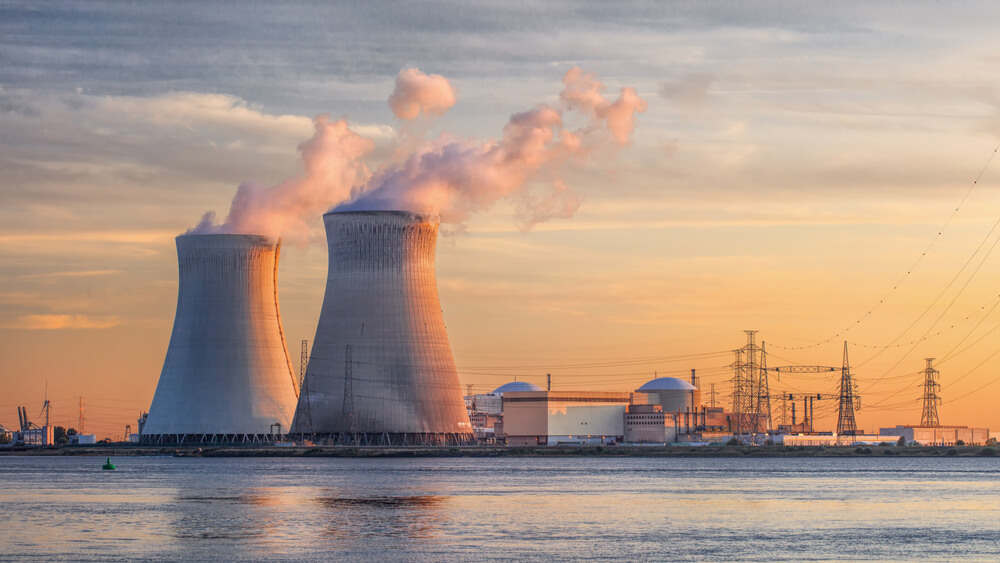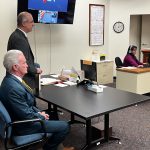The role of emerging energy technologies, especially hydrogen fuel cells and small nuclear reactors, in a clean energy future for New Jersey was the focus of the Steve Sweeney Center for Public Policy’s annual energy conference Monday, Oct. 24.
The conference was a look at alternatives to fossil-fuel-dependent energy sources but did not spend much time on wind and solar power. While offshore wind continues to be a centerpiece of Gov. Phil Murphy’s energy plan, the conference discussed the supportive role that other clean energy technologies can play, especially in what several speakers called hard-to-electrify sectors of the economy.
The speakers included leaders from state utility companies, the new president of the New Jersey Board of Public Utilities, the deputy commissioner of the Department of Environmental Protection, executives from other energy sector companies and representatives of environmental groups. It was held at Rowan University, which hosts the Sweeney Center.
The conference highlight was a panel discussion by energy utility CEOs Michael Renna, president and CEO of South Jersey Industries, Stephen Westhoven, president and CEO of New Jersey Resources Corp., and Ralph LaRossa, president and CEO of PSE&G, spoke of the state’s robust infrastructure.
Westhoven said, “The challenge in front of all of us today is how do we best utilize the infrastructure that we have in order to decarbonize at a rate that’s going to be affordable?” Affordability was a theme that reverberated throughout the panel discussion.
The CEOs described the transformation taking place as one that is about decarbonization and not just electrification. LaRossa warned that the state cannot afford to electrify too fast, that meeting soaring electrification needs could actually lead to decisions that are detrimental to the overall goal. We don’t want to be burning coal to meet demand, he said.
For Westhoven the challenge was to decarbonize at rates that allow energy to be affordable for customers. LaRossa warned about not forgetting the differences in infrastructure availability in rural areas, which are not as prepared for massive increases in energy sources. He also emphasized the continuing role for nuclear power in meeting demand, which he said will not be totally met by renewable sources like wind and solar.
All three CEOs spoke of a need to look at emerging technologies to meet demand in hard-to-electrify sectors of the economy, but they also indicated that some of today’s innovative technologies may have a short lifespan. LaRossa spoke of heavy, long-to-recharge electric vehicles as an area that will have to evolve quickly in order to be more practical.
The panel discussion also warned of the need to consider how the dramatic growth in the number of batteries will be handled as those batteries are in need of disposal. Energy efficiency will be a major area of concern going forward, Renna said.
The thrust of the panel discussion was commitment to clean energy futures tempered with a practical realization of the need for time to achieve goals and an acceptance that innovation will play a role in ways not yet understood.
These cautions were not always shared by the government representatives.
Sean Moriarty, deputy commissioner of the DEP, started his comments with the blunt statement that “there is no longer time to talk about it” and “no longer time to debate.”
Moriarty’s comments suggest a DEP view that climate change represents an existential threat that must be met by aggressive actions on an equally aggressive time schedule. He said the exploration of new energy sources is key to success.
In an interview concerning the state’s recently released climate action plan, DEP Commissioner Shawn LaTourette made clear his department’s position that increased goals for electrification of the transportation and home use sectors is appropriate and necessary, even if the goals are seen by some as overly aggressive.
The new NJBPU president, Christine Guhl-Sadovy, said that “climate change is already impacting New Jersey.” Change is already happening, she added, in terms of rising incremental cost, flooding, increased insurance rates and beach erosion. She said “reducing carbon emissions is a challenge, but it is one we know we can tackle even in the face of misinformation.”
Collin O’Mara, chair of the Mid-Atlantic Clean Hydrogen Hub, spoke of the recent decision by the Energy Department to include his organization as one of the seven clean hydrogen hubs to receive funding for clean energy production.
Steve Sweeney, former state Senate president who now chairs the advisory board of the Steve Sweeney Center for Public Policy, said that nuclear energy is “the cleanest fuel we can possibly have.”
The rehabilitation of nuclear energy’s reputation was evident throughout the conference. A switch in thought on nuclear power seemed tied to the need for what was termed a “base load of power.” The argument made was that technology advances have made nuclear energy much safer.
This comes, as some speakers said, as the state has allowed decommissioning of plants. The technology of small nuclear reactors is also playing a role in the change of perspective, helping to rid the industry of the “China Syndrome” image it had acquired.
Another technology discussed was the use of ammonia as a hydrogen transport, making it easier to move hydrogen to where it is needed. This was another example of a technology that would require buildup of completely new industries.
Throughout the conference some speakers spoke of the misinformation that influences the public’s view of the clean energy transition underway. Ed Potosnak, executive director of the New Jersey League of Conservation Voters, went so far as to claim that the state is “under assault by the fossil-fuel industry.”
At various points in the conference speakers from Rowan talked of the university’s role in research and education for the clean energy future. “Rowan has been involved from the very beginning,” O’Mara said.
Contact the author, Vince Conti, at vconti@cmcherald.com.








